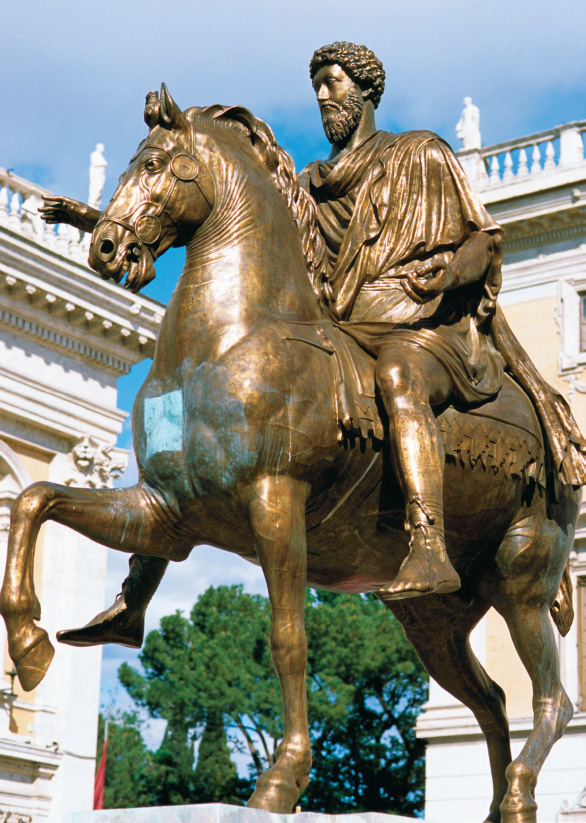A History of Western Society: Printed Page 181
A History of Western Society, Value Edition: Printed Page 185
Civil Wars and Military Commanders
The reign of Marcus Aurelius (r. 161–180 C.E.), the last of the “five good emperors,” was marked by problems. The Tiber River flooded in 162, destroying crops and killing animals, which led to famine. Soldiers returning from wars in the East brought the Antonine plague back to Rome (see page 172) and then carried it northward. Germanic-speaking groups attacked along the Rhine and Danube borders, and the emperor himself took over the campaign against them in 169. He spent most of the rest of his life in military camps along Rome’s northern border, where in addition to leading troops he wrote a series of personal reflections in Greek. These Meditations, as they later came to be known, are advice to himself about doing one’s duty and acting in accordance with nature, ideas that came from Stoic philosophy (see “Philosophy and the People” in Chapter 4). He wrote:
Do not act unwillingly nor selfishly nor without self-examination. . . . Take heed not to be transformed into a Caesar, not to be dipped in the purple dye [a color only the emperor could wear]. Keep yourself therefore simple, good, pure, grave, unaffected, the friend of justice, religious, kind, affectionate, strong for your proper work. Wrestle to continue to be the man Philosophy wished to make you. Reverence the gods, save men.7

The Meditations are a good key to Marcus Aurelius’s character, but they appear not to have circulated very much during the centuries immediately after they were written. Certainly very few later emperors took this advice to heart.
After the death of Marcus Aurelius, misrule by his successors led to a long and intense spasm of fighting. Marcus Aurelius’s son Commodus was strangled by a conspiracy that included his wife, and in 193 five men claimed the throne in quick succession. Two of them were also assassinated, and Septimius Severus (r. 193–211) emerged as the victor. He restored order, expanded the borders of the Roman Empire in Africa and western Asia, and invaded Scotland. He increased the size of the army significantly and paid the soldiers better. This made him popular with soldiers, though it also increased the taxes on civilians. Some of his policies regarding the army created additional problems in the long run. Changes in recruiting practices that emphasized local recruiting of non-Romans created a Roman army that became less acculturated to Roman values. This army was no longer the vehicle for Romanization that it had been in earlier centuries. In part to increase the tax base, in 212 Septimius Severus’s son Caracalla (r. 198–217) issued an edict making all free male residents of the Roman Empire citizens. This made them eligible to serve in the legions — which may have been why Caracalla did this — but also made serving in the army less attractive, and reduced the number of men willing to join.
More than twenty different emperors seized power in the forty-nine years between 235 and 284, a period scholars call the “crisis of the third century.” These emperors were generally military commanders from the border provinces, and there were so many that the middle of the third century has become known as the age of the barracks emperors. Almost all were either assassinated or died in civil wars, and their concentration on overthrowing the ruling emperor left the borders unguarded. Non-Roman groups on the frontiers took full advantage of the chaos to overrun vast areas. When they reached the Rhine and the Danube, they often found gaping holes in the Roman defenses.